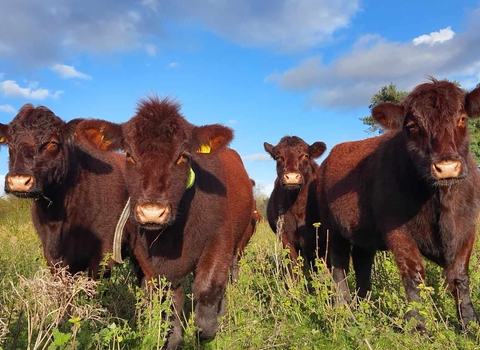A Natural Solution to Restore our Wild Places
Our countryside was once rich in wildlife. Birds such as turtle dove, tree sparrow and yellowhammer were common sights, butterflies, bees and other insects filled our summer days, and flower-rich wildflower meadows thrived.
Our cattle and sheep graze across many Nottinghamshire Wildlife Trust nature reserves, providing an effective, sustainable and natural way of maintaining and restoring wildlife-rich environments. Our grazers work year round, limiting encroachment of scrub and trees, shaping the landscape, treading in wildflower seeds and to creating pockets of diverse and valuable habitat – to support a variety of wildlife.
To put nature into recovery, at least 30% of our land needs to be connected and protected for nature by 2030.
Our grazing programme
As we seek to find the best ways to restore our damaged landscape and to put threatened species on the road to recovery, working with nature is often the solution. Harnessing rare and traditional breeds of cattle and sheep to graze our nature reserves supports the mammoth task of managing and enhancing our land to deliver more for wildlife.
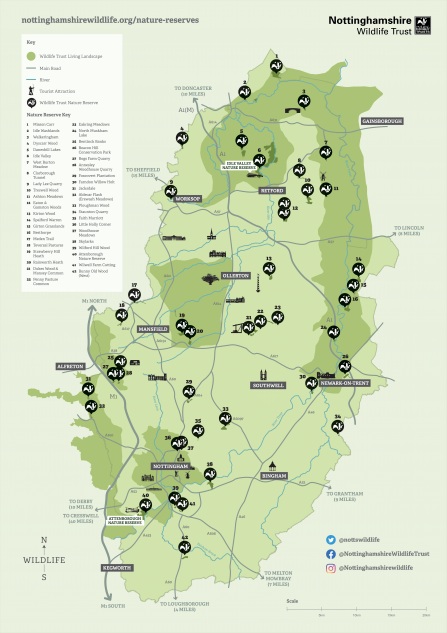
Our estate of nature reserves covers almost 1300 hectares and provides a unique resource for both the county’s wildlife and people. We move our herd of Lincoln Reds and Longhorn cattle along with a large flock of Hebridean and Herdwick sheep between our sites, carefully managing where and when they graze to benefit nature.
Nature focused grazing is an alternative to using machinery and human intervention. By embracing natural solutions, we are able to manage our reserves effectively and sustainably, as well as demonstrating good practice to inspire others.
Meet the team...
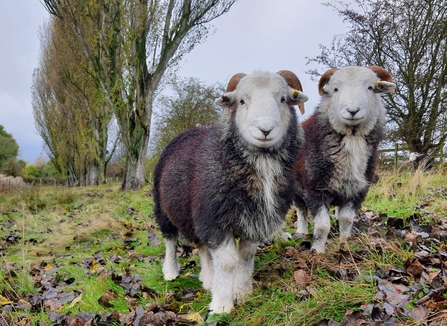
Photo by Agnes Kiemel
Hebridean and Herdwick sheep
Hebrideans were bred to cope with the barren and often harsh atmosphere of the Hebridean isles, these animals thrive on land not suitable for most commercial breeds. Their ability to thrive on a diet of coarse grasses and young seedlings makes them one of the most reliable and effective breeds for conservation grazing.
Herdwicks are native to the challenging Cumbrian fells, so are well able to make light work of the lowland vegetation here in the Trent Valley, tackling a range of plants including bramble. These friendly, calm sheep are easy to work with and are rarely sick.
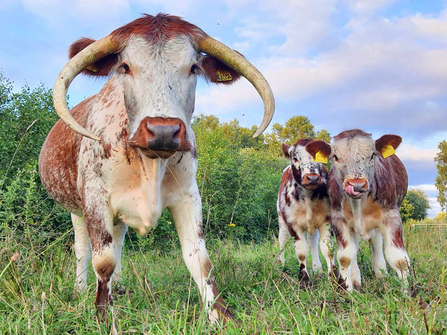
Photo by Agnes Kiemel
English Longhorn & Lincoln Red cattle
Some sites are better suited to grazing with cattle which create a greater diversity of habitat by leaving some areas of longer grass, and their sheer weight also creates variation in the ground surface. Being heavier, their hooves also create larger depressions. Together these result in a greater variety of micro habitats which are particularly beneficial to invertebrates.
Their size also allows them to move through tall, dense vegetation, helping to open up overgrown habitats, a task the Longhorns are particularly well suited to. Lincoln Reds are one of the oldest of the UK’s native cattle breeds and have a long history in the Trent Valley.
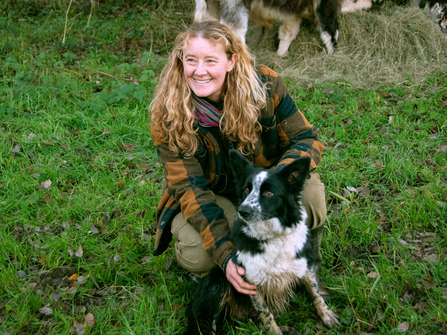
Photo © Sophie Bell
Agnes, Floss and volunteers
Agnes Kiemel, our Conservation Grazing Livestock Officer, has over 20 years’ experience and is supported by colleagues, dedicated local volunteers and her sheep dog, Floss.
Support our work
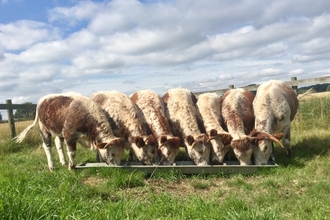
Donate £25
£25 helps keep our herd and flock well fed, watered, healthy and cared for.Donate £50
£50 could go towards fencing installation, repairs and replacement, enabling us to graze across more of our reserves.
Donate £250
£250 could help fund our livestock manager and sheep dog, keeping our livestock on the moveIf you would like to donate a large sum (£500+) please get in touch with our team.
Find out more
Why do you use traditional sheep and cow breeds?
Throughout history, grazing animals have played a key role in shaping our landscape. They are often the most effective, sustainable and natural way of maintaining wildlife-rich environments such as wet meadows, wood pasture, heathland and traditional wildflower hay meadows.
Cattle are extremely effective managers of wet grassland and wood pasture, limiting scrub regrowth but still allowing some patches of scrub to form, creating nesting opportunities for many bird species. The horns of our Longhorn cattle replicate the action of now extinct wild cattle, the auroch, that once grazed the British Isles. They use their horns to break through and uproot tough scrub and small trees that other cattle breeds would struggle to get through, creating a patchwork of habitats in the process.
Sheep graze differently to cattle, better suited to heathland and grassland areas, nibbling close to the ground to create a short sward, benefiting ground nesting birds such as lapwing. Sheep are easier to move around many of our smaller reserves, where heavier animals could compact and damage the ground.
Our traditional breeds are hardy, and graze reserves throughout the year, often in tough conditions.
Where are your barns and what do you use them for?
Our grazing programme, including lambing and calving, is based at our barns at the Idle Valley Nature Reserve in north Nottinghamshire. In the spring, the barns are used for lambing and calving.
Our nature grazing successes
At our Idle Valley Nature Reserve, our longhorn cattle graze in harmony alongside Eurasian beavers - re-introduced to help control scrub in a 58ha wetland enclosure. The cattle are helping to restore the area as a unique and extensive wild bird haven, home to bitterns and marsh harriers. Elsewhere, cattle are helping improve habitat for rare turtle doves at one of their last remaining breeding sites in Nottinghamshire.
No Fence Grazing
Over the past 12 months, thanks to funding support, the Trust has been able to pilot ‘no fence’ grazing to some of our nature reserves. This modern approach utilises special collars and an app to help monitor and manage livestock on sites without the need for so much fencing. This provides huge flexibility to improve habitats and in time, will save money by reducing the amount of fencing we must repair and build to continue and expand our successful nature grazing programme.
To expand this cost-effective approach will require significant investment but has huge potential to save on staff time and fencing materials.
Which reserves benefit from nature grazing?
We move our livestock around many of our grassland and wetland nature reserves, including Ashton’s Meadow, Rainworth Heath, Attenborough, Besthorpe, Skylarks and Idle Valley Nature Reserves.
Will you help us support our livestock?


